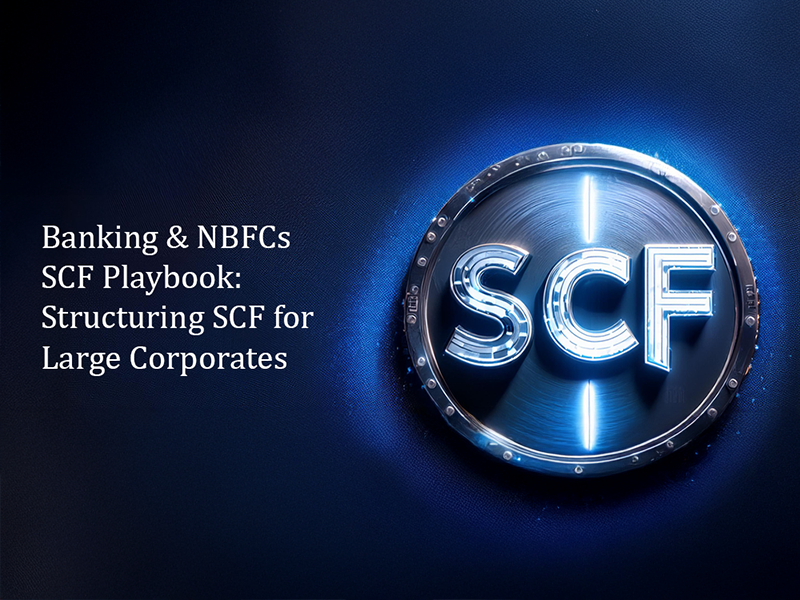The Top Three Operational Decisions When Launching a Factoring, SCF, or Invoice Discounting Fund
So, you’ve decided to launch a Factoring, Supply Chain Finance (SCF), or Invoice Discounting Fund? Bold move. Welcome to a world where cash flows like water (if structured correctly) or dries up faster than a bad startup’s runway (if not).
Setting up a fund that finances businesses against their invoices sounds straightforward—but in reality, it's a game of precision, risk, and ruthless efficiency.
The difference between success and failure? Three core operational decisions that will make or break your fund. Let’s get into it.
In invoice financing, you’re essentially fronting cash based on invoices that should (hopefully) be paid later. But here’s the catch: not all invoices are created equal, and not all businesses deserve your money.
If you pick the wrong borrowers, you’ll be chasing ghost payments, watching your fund’s performance nosedive, and explaining to investors why their returns look like a horror movie.
What You Need to Consider:
🚨 Who are you funding?
- Are they established businesses with solid cash flow, or are they running on fumes and hoping for a miracle?
- Do they have a history of on-time payments from their buyers, or is their "receivables list" just a wishful thinking exercise?
📜 Are the invoices legit?
- Are these invoices undisputed, approved, and payable?
- Is there fraud risk? (Pro tip: If the same buyer magically has a different address every three months, be worried.)
🧐 How concentrated is their revenue?
- If a borrower gets 80% of their revenue from one client, and that client goes under, your fund is holding worthless paper.
- Diversification is key—fund borrowers who have multiple, strong buyers.
🚀 Pro Move: Use automated credit assessment tools to filter out weak borrowers before they even get a chance to knock on your door.
Ah, pricing—one of the most delicate (and dangerous) aspects of running a fund. Set rates too high, and you’ll scare away good borrowers. Set them too low, and you won’t be paid enough to cover defaults, delays, and operational costs.
The goal? Find the perfect balance between risk and reward.
How to Nail It:
🎯 Risk-Based Pricing
- Lower-risk borrowers (with large, reputable buyers) get cheaper financing.
- Higher-risk borrowers (new businesses, long payment cycles) get priced accordingly—or rejected.
⚠️ Factoring Without Recourse? Tread Carefully.
- Without recourse = You, the fund, take the hit if the invoice isn’t paid.
- With recourse = The borrower takes responsibility if the invoice isn’t paid.
- Hybrid models are becoming popular: Partial recourse with insurance-backed coverage.
🔍 The Importance of Real-Time Data
- Use AI-driven credit monitoring tools to flag early signs of financial distress before an invoice goes bad.
- If a borrower’s buyer suddenly starts delaying payments, your risk model should immediately adjust pricing or stop further financing.
🚀 Pro Move: Partner with credit insurance providers to cover a portion of defaults. Yes, it costs money—but it’s better than eating massive losses.
Here’s something many new funds get wrong—cash flow within the fund itself.
It’s tempting to deploy capital aggressively, financing as many invoices as possible to boost returns. But what happens when:
- Invoice payments get delayed (because, surprise, businesses love stretching payment terms)?
- Market conditions change, and fund withdrawals spike?
- An economic downturn suddenly makes funders nervous?
If you’re illiquid, you can’t fund new deals, you struggle to honor withdrawals, and you end up scrambling for expensive emergency funding.
How to Stay Liquid & Smart:
💧 Match Funding Duration to Receivable Terms
- If invoices typically get paid in 60 days, ensure your investor lock-in periods align (e.g., 90-day redemption windows).
- The last thing you want is investors pulling money while you’re still waiting for invoices to clear.
📊 Real-Time Cash Flow Monitoring
- Set up liquidity buffers for unexpected delays.
- Use AI-powered cash flow prediction models (seriously, it’s 2025—no excuses for bad forecasting).
🔄 Diversify Your Own Funding Sources
- Have a mix of institutional investors, family offices, HNIs, and alternative lenders so you’re never overly reliant on a single capital provider.
🚀 Pro Move: Build a secondary market where investors can sell their stakes before maturity—giving them flexibility without disrupting fund liquidity.
Most SCF, factoring, and invoice discounting funds fail because they underestimate:
- ✅ How bad borrowers can be 🥶
- ✅ How tricky pricing and risk balance is 🎯
- ✅ How fast liquidity can dry up 💰
By making smart operational decisions upfront, you’re not just setting up a fund—you’re building a scalable, resilient, and highly profitable financing engine.
So, before you dive headfirst into SCF, ask yourself:
- Are we selecting the right borrowers?
- Is our pricing aligned with real-time risk?
Do we have ironclad liquidity management?
If yes, congratulations—you’re on the path to SCF greatness.
If no, fix it before it’s too late.



